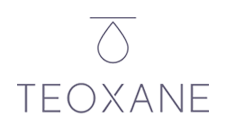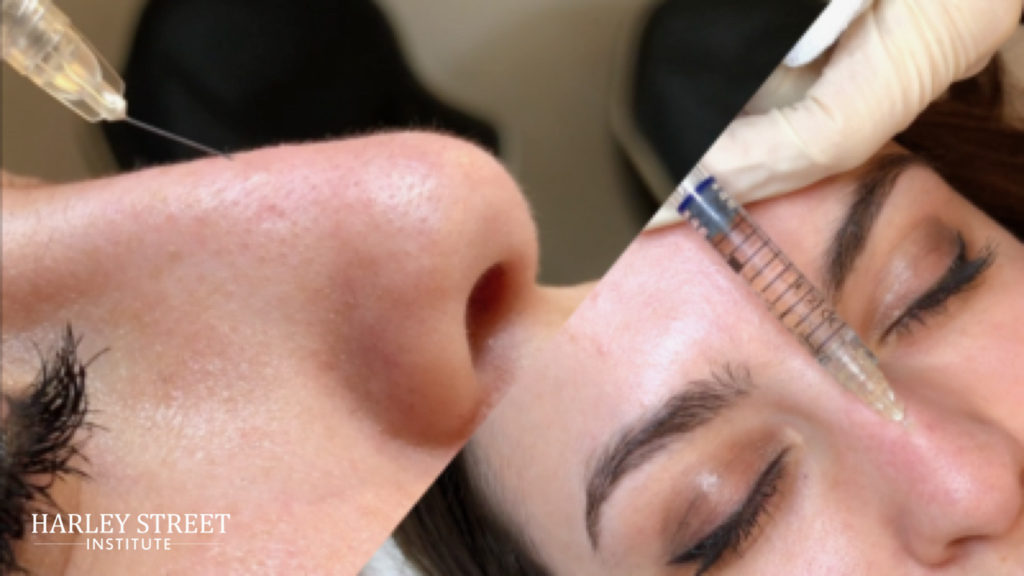-
Cosmedocs| Non Surgical
-
COSMESURG| Surgical
-
HARLEY STREET| Skin Care
FORMULATIONS -
| Skin Bar Clinic
 GLOW & GO
GLOW & GO
Lip Fillers – What Product to Use
Lips form a focal component of facial aesthetics enabling individuals to communicate and express personal emotions and sentiment. Full lips with defined borders are a hallmark of youth and attractiveness. As we age, our lips can become thin, flaccid and wrinkled with loss of volume and elasticity. Sun damage, smoking, genetics, loss of teeth and bony structure all contribute to a weary and worn appearance with perioral lines, downturned corners of the mouth, lip thinning and ill defined border.
Lip fillers are frequently used to enhance fullness, shape, contour and minimise perioral/smoker’s lines. Individually tailored filler injection techniques, sometimes in combination with other procedures, can provide a marked improvement in appearance.
There are numerous dermal fillers available that are suitable for lip enhancement with the most commonly used based on hyaluronic acid, sometimes called ‘hyaluronic acid (HA) fillers’. Although other products are available such as semi-permanent fillers, fat injections and implants, HA fillers remain popular due to their safety, duration and ‘natural’ results. Permanent fillers can cause problems over time and pose the risk of potential lumps, unevenness and granulomas which may require surgical excision.
Reasons against Permanent Fillers
- Lips change with age and this permanency may not look harmonious in the context of an aging lip.
- The lips are dynamic and constantly move. This may alter the pattern of the lip fillers in the future.
- There is no reversal of permanent injectable fillers.
Hyaluronic Acid
Hyaluronic acid (HA) exists naturally in all living organisms and is an important component of connective tissues, including the skin. In fact, 50% of the total body HA is found in the skin where it helps to provide structural support, nutrients, add volume and fullness. HA fillers vary in their source, concentration, particle size, cross-linking, viscosity, gel/particle form, volume and inclusion of anaesthetic.
Benefits of Choosing Hyaluronic Acid Fillers for Lips
- Aesthetic results: Hyaluronic acid is hydrophilic, hydrating and volumising. It helps to support lip structure and achieve a natural lip shape.
- Gradual volume: The volume injected is controlled and tailored to individual’s needs.
- Lumps can be dissolved: It is possible to quickly break down any product lumps.
- Duration: HA fillers tend to last 6-12 months. Additional filler can be added during that time.
- Allergy is rare: As the fillers contain hyaluronic acid that is similar to that found in the body, they are unlikely to cause an allergic reaction. Bacteria sourced HA has become the filler of choice due to its high purity, viscosity and non-animal base making allergy rare. If there is a known allergy to lidocaine, the practitioner should be informed.
- Further treatments possible: A gradual enhancement can be made over time at different appointments adding additional filler.
Disadvantages of Dermal Fillers
- Temporary swelling and bruising may occur after treatment
- Repeat treatments required to maintain results
Hyaluronic Acid Fillers for Lips
The lips are one of the most requested areas for tissue augmentation in both young and old clients. HA fillers are ideal in replenishing the volume lost and re-establishing aesthetically pleasing well proportioned, contoured, fuller lips. There are several HA fillers on the market with some of the more popular ones specific for lips being:
Restylane Lip Volume®
Q-Med, Galderma
Juvéderm® VOLBELLA®
Allergan
Teosyal Kiss®
Teoxane
All the above are colourless, contain lidocaine and results last up to 12 months. Every practitioner tends to develop a personal preference for a particular HA filler which may vary depending on the area of concern. However, in the right, experienced hands, excellent results can be obtained from all listed above.
Choosing A Filler
There is no universal filler that is ‘advisable’ for every procedure or for every patient. The physical properties of HA fillers are important and influence the clinical outcomes, such as HA concentration, modulus, swelling, particle size, cross-linking and extrusion force.
Modification and Crosslinking
In its natural state, HA is biocompatible and has a high affinity for water but it is also rapidly broken down. In order to improve its durability HA may be modified (usually at the carboxylic acid or hydroxyl groups) and cross-linked. The degree of modification will greatly affect how the filler behaves. With increased cross-linking, the distance between cross-linked segments becomes shorter, increasing the network strength and the ‘stiffness’ of a gel.
Concentration
HA concentration is expressed in mg/mL and the total HA concentration consists of insoluble HA gel and soluble-free HA (incorporated to facilitate ease of filler extrusion). Only the cross-linked HA will resist degradation and extend durability.
Elastic Modulus
Fillers with a lower G’ are best used where volume and softness & mobility are important, such as in lips where we recommend first time patients using the more standard fillers like teosyal global, restylane, juvderm 2 or equivalent. Usually the filler by most companies dedicated for lips provide more volume, longer lasting results but a little stiffer lip due to increased G’.
Swelling
HA has a high water binding capacity. The longer the HA molecule, the more water molecules are bound per unit. Fully hydrated gels will cause little swelling when injected, whilst those that are not (nonequilibrium gels) tend to swell post injection.
Particle Size
The particle size must be appropriate to be able to pass through a fine-bore needle with ease. Larger HA particles tend to last longer and may be more suitable for deeper defects and injections. Biphasic dermal fillers consist of particles of various size depending on their indication. Monophasic HA fillers are cohesive gels rather than just HA particles.
Available fillers have a wide variety of properties that will affect clinical outcome. These should be taken into account when deciding on an appropriate filler for a particular application and patient. The results will vary depending on the experience of a practitioner and the response of the patient to the filler. There is no single parameter that defines the use and effectiveness of a HA filler.
Procedure Overview
All HA filler lip enhancement can usually be performed within a 30 appointment. Advise will be given prior to treatment on particular medications and supplements to avoid before the procedure. Alcohol should not be consumed 2 days before and prophylactic antiviral medication may be required for those that suffer from cold sores.
Contraindications
| Pregnancy/Breastfeeding | Active infection – cold sore, acne |
| Hypertrophic/keloid scarring | Bleeding abnormalityacne |
| Roaccutane use in last 6 months | Impaired healing – immunosuppression |
| Active psoriasis/eczema | Multiple severe allergies |
| Known allergy to dermal filler products | Body dysmorphic disorder |
Side Effects and Complications
Common Side Effects
- Swelling – the majority of individuals will experience swelling which may last from a couple of days up to 2 weeks
- Bruising
- Redness and tenderness
Possible Complications
- Asymmetry – this can usually be amended by added additional filler product where needed.
- Lumps and bumps – most irregularities can be massaged smooth immediately after the procedure. Lumps that persist or appear later may need to be broken down with Hyaluronidase or, rarely, steroid injection.
- Infection
- Tissue necrosis – tissue loss following injection into a blood vessel.
- Scarring
- Allergy
In Summary
In experienced hands, HA fillers can give highly satisfactory results for perioral rejuvenation. Appropriate patient selection is critical to ensure a satisfying aesthetic outcome with realistic expectations. Often it may be beneficial to combine dermal filler treatments with other procedures such as botulinum toxin injections, chemical peels or laser resurfacing.
The major benefits of HA fillers include their known safety profile, temporary duration and ability to be broken down with Hyaluronidase. Serious complications are rare and clients can opt to continue with further enhancement procedures as required.
Lesley Fraser
We use cookies to give you the most relevant experience, Cookie Policy.

Botox & Dermal Filler Course
*excluding VAT

See What Our Fellows Have Been Up to Recently
Understanding depth, volume, and pressure can enhance a practitioner’s skill set, enabling them to provide more valuable services to their clients using their existing tools. #aestheticmedicine #dermalfillertraining #wrinklefree

Mastering hand stability isn’t magic, it’s a mix of experience & targeted learning 🎯 Our students get ahead with specialized techniques, paving the way for precise injections! 💉#SkillDevelopment #FutureHealthPros
.
.
.
.
.
#dermalfillertraining #aestheticmedicine #botoxtraining

Virtually any area can be reached using a cannula #fillertraining #aestheticmedicine #hsifellowprogram

“Unlock Your Aesthetic Potential with Harley Street Institute’s Fellowship! 🌟 Elevate your skills in aesthetic medicine through our intensive hands-on training in Botox and Dermal Fillers. Get ready to sculpt beauty, one injection at a time! 💉✨ Join us for a transformative learning journey that takes you beyond the classroom and into real-world expertise. Are you ready to master the art of enhancing natural beauty? 💫 #HarleyStreetFellowship #AestheticMedicineMastery #SculptingBeauty”

Link in bio
"Unlocking the Secrets of Masseter Botox: Empowering smiles, one injection at a time! 💉💪 Join me on an exciting journey as we delve into the world of Masseter Botox. Learn the art and science behind this transformative procedure, and discover how it can redefine facial aesthetics. Don`t miss out on this opportunity to enhance your skills and expand your practice. Let`s reshape faces and build confidence together!
Link in bio.
#MasseterBotoxCourse #FacialAesthetics #TransformativeProcedures #SmileEnhancement #ContinuingEducation
#aestheticmedicine

💭Have You Ever thought :
👉🏼What lies beneath the orbicularis oculi ?
👉🏼Why do I need to have the correct depth ?
👉🏼How to avoid an asymmetric smile, periorbital edema or a shelf like look at the lid/cheek junction ?
⚠️We all know that when treating crows feet, we are administering botox into the orbicularis oculi, and that there are complications but which and how?
‼️Too inferior or deep🟰 an asymmetric smile
(you’ve hit the zygomaticus minor muscle and major if you’re really too inferior!)
‼️Too medially 🟰 periorbital edema
(and you’re the periorbital region )
Located just underneath the skin, the orbicularis oculi has multiple origin and insertion points. A paired muscle, that overlies the periorbital region in a circular manner.
⚠️The wrong location, the wrong depth can result you injecting botox into a completely different muscle.

Welcome to the under eye region, an area of the face that can often show signs of aging such as wrinkles, hollows, and dark circles. Today, I want to share with you how fillers can be used to address these concerns by injecting them into different layers of the skin.
Using a needle, we can inject fillers into the dermis layer of the skin to improve the appearance of fine lines and wrinkles. This can help to smooth out the texture of the skin and create a more youthful and refreshed look. However, it’s important to note that injecting fillers into this layer requires specialized training and experience to ensure safe and effective results.
In addition to the dermis layer, fillers can also be injected into the bone to help address deeper hollows and shadows under the eyes. This technique requires a higher level of expertise as it involves precise placement of the filler to achieve the desired outcome.
Lastly, fillers can be injected into the fat compartment of the under eye region using a cannula. This method can help to add volume and smooth out any irregularities in the fat pads under the eyes. Again, specialized training and experience are crucial for safe and effective results.
Overall, the use of fillers in the under eye region can provide a non-surgical solution to address signs of aging and enhance the appearance of the face. However, it’s important to seek out a qualified and experienced provider who has received proper training in the use of fillers in this delicate area.
If you’re interested in learning more about how fillers can benefit you, please don’t hesitate to reach out and schedule a consultation. Let’s work together to help you achieve your aesthetic goals!
#cosmedocs #harleystreetinstitute
.
.
.
.
#lifestyleblogger
#selfcarematters #aestheticmedicine
#beautytips
#skincarecommunity
#antiagingtips
#makeuptutorials
#selfcarelove
#aestheticbeauty
#lifestyleinspo #lifestyleblogger
#selfcarematters #dermalfillertraining
#beautytips
#skincarecommunity
#antiagingtips
#makeuptutorials
#selfcarelove #dermalfillers
#aestheticbeauty
#lifestyleinspo
#antiagingsecrets
#harleystreet #drahmedhaq #oxforduniversity
#harleystreetinstitute

The mentalis muscle is a facial muscle located in the chin area. It originates from the mandible and extends downward to the skin of the chin. The primary function of the mentalis muscle is to control the movement and position of the lower lip and the skin of the chin. It plays an important role in activities such as speaking, smiling, and pouting.
In addition to its role in facial expression, the mentalis muscle also helps to maintain the position of the lower front teeth and the shape of the lower lip. Dysfunction or hyperactivity of the mentalis muscle can lead to the development of chin wrinkles, which are vertical lines that appear on the skin of the chin. Understanding the anatomy and function of the mentalis muscle is important for healthcare providers when performing aesthetic procedures in the chin area.
Online Course With Video Demo
www.harleystreetinstitute.com
#botoxtraining #mentalistreatment

#Repost @dranabilamzavala with many thanks 🙏 and best wishes for the future.
Esta semana tuve la oportunidad de estar en Londres en una de las mejores clínicas con los mejores equipos de Medicina Estética en el mundo, perfeccionado técnicas de Rinomodelación con el Dr.Ahmed Haq.
——
@drahmedhaq You are simply incredible, thanks for the hands on and all the new techniques you shared. @drahmedhaq @harleystreetinstitute @cosmedocs
.
.
.
#aestheticmedicine #dermalfillertraining #nosejob #medicaltraining #plab #harleystreet #10harleystreet #aesthetics

Huge Congratulations to Mariana, on completing her foundation course in Aesthetics Medicine with us here at Harley Street Institute. 🥇✨
This combined course covers the necessities required for daily clinic practise, whether starting out or refreshing skills. Our small group training (4:1) provide unparalleled mentorship at any of our training days.
#cosmetictraining #aesthetics #hsi #cosmetics #cosmedocs #harleystreetcourses #foundationcourse #london

Only courses with true mentorship. #botoxtraining #dermalfillertraining #aestheticmedicine #hsifellowprogram #harleystreetfellowship

Huge congratulations to @onemedicalclinic for completing her Fellowship in aesthetic Medicine with us at Harley Street Institute 💫💫✨ We are so proud of having you 🥰
#Repost
Dr Crystal:”When I completed medical school 13 years ago, one of my cherished mentors gave me advice that has stayed with me for life - “never stop learning; it makes the difference between being good and being great."
From my years of Ophthalmic-surgical training to becoming a student of Public Health to my experience as a legislator in Parliament to operating my own
Medical and Aesthetic Medical practice, the lessons learned have been varied and valuable. 🤓
On this occasion my commitment to lifelong learning led me to Harley Street, London. I didn’t just want to be a good injector, I needed to be a great one so I needed to go where the great injectors were. 💉
Every day for the last two months I was immersed in one-on-one intensive training with the aim of mastering my injectable skills and thanks to the incredible team of doctors and trainers at @cosmedocs
@harleystreetinstitute l am proud to say Mission Accomplished! “

Huge Congratulations to Dale Rae for completing the Certificate in Aesthetic Medicine training program. 💫💫
💉The 3-day Aesthetic Medicine Certificate is tailored towards new practitioners who are ready to kick-start their career in Aesthetic Medicine. It aims to provide an in-depth understanding of the Layers of the Skin and Biological Ageing Process. The package also includes our most popular Foundation Botulinum Toxin and Dermal Fillers course, including an introduction to using cannula.
💉It is an Intense 3-day course incorporating essentials basic and advanced botox and dermal filler procedures combined with popular skin treatments perfect for the beginner all-rounded aesthetic practitioner.
You will be provided direct mentorship by our various cosmetic practitioners who are experts in performing their respective aesthetic treatments.
💉Small group training under the direct supervision of our experienced aesthetic trainers. Master procedures to an advanced level. Learn theory, consultation methods and manage client expectations as well as complications.
🙌 DM for more details. #aesthetic #dermalfillers #detmalfillertraining

Aesthetic medicine is an art. It`s not enough to know facial anatomy or to be a good injector. The best aesthetic doctor has an artistic eye. Sometimes this is a skill that can be developed over years. Being able to assess a fa ce within seconds of walking into a room. Knowing exactly how injectables can be used for subtle and natural results.
The end result should not be obvious to an untrained eye.
It`s such a shame to see overfilled faces exaggerating proportions. When really, the main aims are to restore volume lost or correct natural imbalances.
#aestheticmedicine #dermalfillers #beauty
Repost @cosmedocs

Huge Congratulations to @erikatydermatology for completing her Fellowship in Aesthetic Medicine with us at the Harley Street Institute 💫💫💫
Our Aesthetic Fellowship is the pinnacle of training for those seriously interested in escalating their careers.
.
Our fellows are taken on board within clinic over 3 months with weekend workshops, 1-1 mentoring, treatment log book and clinical assistance.
.
Following on from this they have the opportunity to have Independent Fellow Clinics to improve their confidence with patient consultation and individual treatment planning.
.
We believe that this is the future of aesthetic traning to ensure that practitioners have captured all the essential skills for successful careers.
.
We have been extremely proud of our old fellows, many who have moved on to now work with some of the most prestigious clinics in London.
.
Next enrolment periods: TBC
.
To find out more information or to apply, please email your CV to [email protected]
.
#thefellowship #harleystreetinstitute #doctorsanddentists

KISS
As the years some procedures get unnecessarily more complicated without much added benefits. Risks / complications have increased: more inexperienced practitioners , inadequate techniques, increasing consumer demand for bolder augmentation.
#keepitsimplestupid









Note: if you did not get the email, please check spam/junk folder





